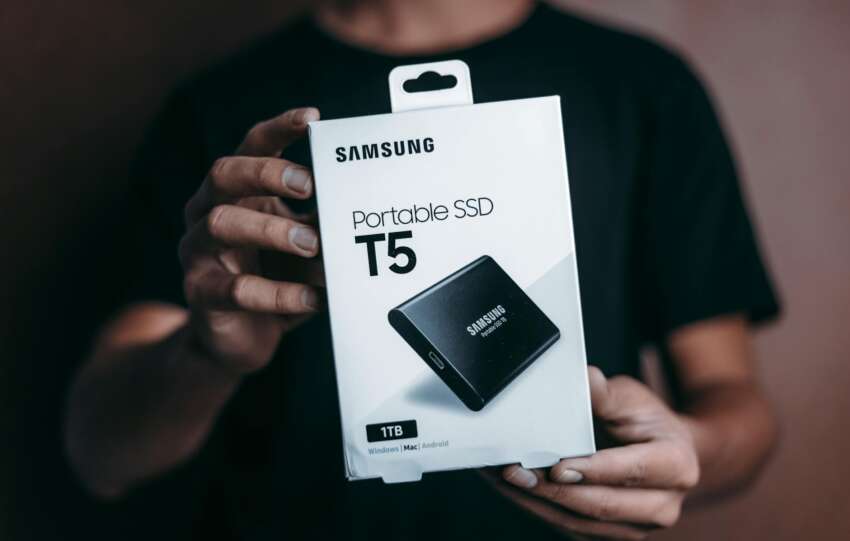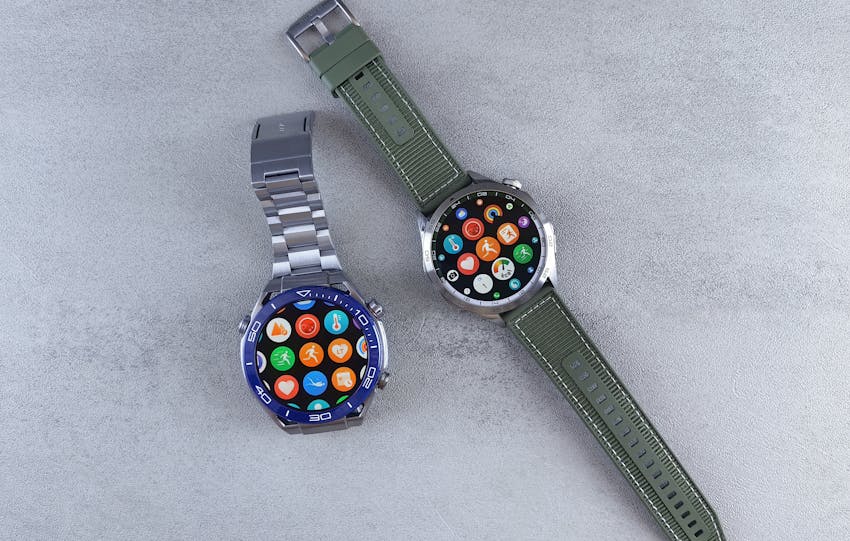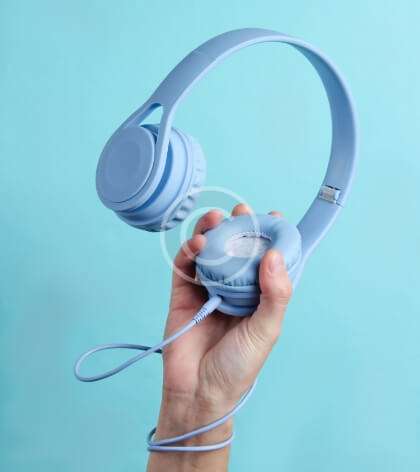The noise-canceling headphone market looks completely different from what it was five years ago when I started testing them. Many people ask me if premium models justify their high prices. My tests of numerous latest models show that $300 hits a sweet spot where you get the best bang for your buck.
Premium headphones like the Bose QuietComfort Ultra come with great features like adjustable ANC settings from 0 to 10. The interesting part is that budget-friendly options like the Soundcore Space One (under $100) pack an ANC punch that matches models two or three times more expensive. Battery life in wireless noise-canceling headphones has taken huge strides. The Cambridge Audio Melomania P100 leads the pack with 100 hours of playback. The Bose QC Ultra gives you 24 hours – enough for long flights but less than what other brands offer.
My detailed test will show you what $300 gets you in 2025’s noise-canceling headphone market. You’ll learn if this price point makes sense and when you should spend more or less money.
What does $300 really buy in noise canceling headphones?
The $300 price point is a sweet spot in the noise canceling headphones market. My tests of dozens of models show this tier combines great performance and features without breaking the bank.
Price vs performance: where $300 stands
$300 hits the perfect middle ground in the noise canceling headphone market. Quality ANC technology starts at $200, while flagship models from top brands cost $350-$400. The $300 mark is where you start seeing diminishing returns.
This price point often falls into the “previous flagship” category. The Sony WH-1000XM4 headphones—though discontinued—now sell for under $300 and drop close to $200 during sales. These models pack the innovative technology that was top-of-the-line just a year or two ago.
$300 headphones deliver about 80-90% of what you get from $400 flagships. You’re paying for fine-tuning rather than core features at this level. While audiophiles might spot subtle differences, regular users might not find the extra $100 worth it.
What features are standard at this price point
$300 gets you these standard features across major brands:
- Advanced ANC technology: Most models let you adjust noise cancelation levels (Bose gives you 0-10 levels)
- Extended battery life: You’ll get 30+ hours, with Sony’s WH-1000XM4 running over 37 hours with ANC on
- Quick charging capabilities: A 15-minute charge powers 2.5+ hours of playback
- Multipoint connectivity: You can connect to two devices at once
- Companion apps: Rich apps with EQ settings, ANC controls, and firmware updates
- Premium comfort materials: Memory foam ear cushions and protein leather come standard
Sound quality shines consistently at this price, though each brand has its signature sound. Sony leans toward bass-heavy profiles, while Bose aims for balance. All the same, most $300 models let you tweak EQ through their apps.
How $300 headphones compare to cheaper models
The quality gap between $300 and budget headphones ($60-100) has shrunk over the last several years. Brands like Anker’s Soundcore have shaken up the market with impressive models.
Budget stars like the Soundcore Space One now match the noise cancelation of pricier models. These budget options blocked airplane noise and office chatter effectively in my tests.
Key differences still exist between $300 and budget models:
- Build quality: $300 models use better materials and last longer than plastic budget options
- Sound refinement: Budget models sound good, but $300 headphones offer crisper details, cleaner bass, and better separation
- Feature implementation: Features like transparency mode and adaptive ANC work naturally in $300 models
- Microphone quality: Mid-range and premium models handle calls better
Budget models sometimes win at battery life. The Anker Soundcore Life Q30 runs for 44+ hours with ANC on, beating many $300 options.
$300 gets you reliability, refinement, and a complete package without paying extra for cutting-edge tech.
How we tested noise canceling headphones
Image Source: audioXpress
Testing noise-canceling headphones needs a careful approach to give reliable, ground results. My testing method combines lab measurements with daily use to review how these devices work when you need them most.
Testing environments: flights, offices, and streets
The tests happened in a variety of environments where noise cancelation matters most. The main testing took place in:
- Airplane cabin simulations using recorded aircraft noise played through a 7.1-channel surround speaker system at 80 decibels, which matches the sound level in older jets like Boeing 737s
- Open-plan offices with speech at 52 dB LAeq that matches typical workplace chatter
- Urban streets with traffic noise and outdoor ambient sounds
- Bus cabins during regular commutes to check performance in public transportation
On top of that, I tested each headphone with fans to check how microphones handle wind noise, a common issue for ANC technology. This gave me a full picture of performance with low-frequency constant noises (airplane engines), mid-frequency changing sounds (office chatter), and unpredictable outdoor environments.
ANC measurement tools and methods
My objective measurements used specialized equipment including:
- Head and Torso Simulator (HATS) with realistic artificial ears to capture sound as human ears would notice it
- GRAS 43AG ear-and-cheek simulator connected to analytical software for over-ear headphones
- GRAS KB5000 anthropometric pinna mounted on simulator for earbud testing
- TrueRTA audio spectrum analyzer software to measure sound leakage across frequencies
Each headphone went through three steps: measuring unoccluded noise (baseline), then passive attenuation with ANC off, and finally active attenuation with ANC enabled. This helped me calculate both passive isolation capability and the extra noise reduction from active technology.
I calculated average noise cancelation in decibels from 100Hz to 1,200Hz frequency band. This range contains most airplane cabin noise based on recordings from multiple airliners.
Sound quality and comfort evaluation
Sound quality checks included:
- Playing the same test tracks across multiple genres with ANC on and off
- Looking at clarity, bass response, and overall balance
- Checking speech clarity using standardized metrics
- Measuring how much effort it takes to listen according to ETSI TS103 558 standards
Comfort tests meant wearing each headphone for at least 3 hours to check:
- How tight over-ear models felt
- Ear fatigue over time
- Heat buildup around ears
- Weight balance across the headband
Battery life and usability checks
Battery tests followed strict rules in a controlled setting:
- Volume set to 85 dB SPL using pink noise (250-2000Hz) after head calibration
- Continuous looped tracks played with ANC on until batteries died
- Time-lapse video recorded LED status changes while audio tracked exact cutoff points
- Charge time checked from wall outlets and USB ports
- Quick-charge features tested
- Auto-off timer and passive playback options verified
Beyond these basics, I checked companion apps, connection stability between devices, and how well extra features worked like ambient sound modes, spatial audio, and voice assistant integration.
Top performers under $300 in 2025
Image Source: RTINGS.com
My testing of headphones of all types revealed four outstanding performers in the noise canceling market that provide exceptional value under $300 in 2025.
Best over-ear pick: Bose QuietComfort Ultra
Bose QuietComfort Ultra headphones still reign supreme in noise cancelation for 2025. Their adaptive noise cancelation system gives you outstanding customization with 11 levels of adjustment. These headphones shine especially when you’re traveling by air, creating what users often call a “bubble of silence” around you.
The comfort-to-performance ratio amazed me. They weigh just 0.56 pounds, making them perfect for long wear periods. The protein leather ear cushions stay comfortable throughout long flights. You get 24 hours of battery life with ANC enabled, which works well for long trips though others offer more.
The sound quality caught me by surprise with better clarity and refined audio than earlier Bose models. These headphones stand unmatched for travelers who need both comfort and silence.
Best earbuds pick: Sony WF-1000XM5
Sony’s flagship earbuds got a major upgrade. The WF-1000XM5 model is 25% smaller and 20% lighter than previous versions. This size reduction makes them much more comfortable during long listening sessions.
The WF-1000XM5 delivers top-tier noise cancelation and amazing sound quality with new 8.2mm speaker drivers. The battery lasts 8 hours with ANC enabled—beating Apple’s competing models that only manage 6 hours.
Call quality makes these earbuds special. Sony markets these as their “best ever call quality”. They use bone conduction sensors to pick up voice vibrations straight from your skull bones. My tests in noisy places showed that callers heard my voice clearly.
Best affordable pick: Soundcore Space One
The Soundcore Space One gives you premium features at around $100. These headphones adapt their noise cancelation automatically to your surroundings with surprising effectiveness.
Battery life stands out—40 hours with ANC on and 55 hours with it off. Quick-charging capability gives you 4 hours of playback after just 5 minutes of charging.
Sound quality beats expectations at this price point. While not as refined as $300+ models, you get full-bodied bass, clear mids, and enjoyable treble that beats many competitors costing twice as much.
Best for calls: EarFun Air Pro 4
EarFun Air Pro 4 earbuds cost around $60 with discount codes and excel at call clarity. Six onboard microphones work with AI algorithms to cut down background noise.
ANC performance impresses by reducing external noise volume by 75% in “Strong ANC” mode. Real-world testing shows battery life lasting 8 hours and 44 minutes.
Call quality stays clear even in tough conditions. The better microphone system handles wind and street noise more effectively than older models. These earbuds work great for professionals who need reliable calls without spending too much.
What you don’t get even at $300
$300 headphones deliver great value but they still have their share of compromises. Mid-range options have improved a lot, but several key limitations set them apart from premium models.
Limitations in build quality or materials
$300 noise canceling headphones are durable enough, but they can’t match the premium materials used in flagship models. Most mid-range options use high-grade plastics instead of metal components or premium composites. Many manufacturers cut costs on hinges and adjustment mechanisms – parts that break down first over time.
These headphones use synthetic leather for ear cushions rather than genuine leather or advanced materials like Alcantara. The cushions wear out quickly and might crack when exposed to different temperatures. The foam density doesn’t match premium models, which affects comfort during long listening sessions and overall durability.
Missing features like spatial audio or aptX Lossless
You won’t find state-of-the-art audio technology in the $300 range. Spatial audio mostly stays limited to premium models or specific brand ecosystems. Support for advanced codecs like aptX Lossless or LDAC varies among mid-range headphones.
Multipoint connectivity comes with its limits – fewer device connections or lower audio quality with multiple devices connected. The processing chips in these headphones usually represent older technology, which limits future software updates and enhancements.
Shortcomings in app support or customization
The app experience for $300 headphones doesn’t match premium models. EQ adjustments are often restricted, with fewer bands to adjust or just presets instead of fully customizable curves.
Apps for mid-range models get updates less often than flagship products. The integration with voice assistants or third-party services remains simple. These headphones offer basic control customization, limited wear detection, and fewer smart features that adapt to your surroundings.
Are $300 headphones worth it in 2025?
The decision to buy $300 noise canceling headphones goes beyond just looking at the price tag. Your specific needs, how you plan to use them, and what you expect from sound quality will help determine if they’re worth it.
Who should spend this much
Frequent travelers will find $300 noise canceling headphones are a great way to get more from their journeys. People who often fly or take long commutes on busses and subways will notice their experience improves substantially with mid-range headphones. The hybrid ANC systems at this price come with more microphones that detect different types of sounds.
These headphones make sense for office workers in open spaces or people working from home with noisy backgrounds. They cut down constant sounds like computer fans and air conditioning units, which helps create a focused workspace.
Sound enthusiasts looking for balanced performance without premium prices will love what the $300 range offers. You get excellent sound quality and solid noise reduction. Most models let you customize settings through apps and give you 30+ hours of playback with ANC enabled.
When to consider cheaper alternatives
Cheaper options make more sense if you use headphones in relaxed, quiet settings. Regular headphones without ANC can block casual background noise like coffee shop chatter almost as well as noise-canceling models, and they cost much less.
Budget-conscious buyers should check out:
- Soundcore Space One ($100) with price-defying noise cancelation
- EarFun Air Pro 4 (under $100) with excellent noise reduction that rivals $200+ models
- Anker models that last longer than many $300 options
People who feel that “underwater” sensation some get with ANC might prefer simpler noise reduction systems in cheaper models.
When to go premium instead
Should you spend more than $300? Premium models shine if you need exceptional noise reduction in tough environments. The best ANC systems still show up in flagship models like the Bose QuietComfort Ultra, which blocks more sound than any other headphones.
Yes, it is worth noting that premium models handle higher-pitched noises better. Most ANC systems have trouble with sudden, loud noises and higher frequencies because of their shorter wavelengths. Premium headphones tackle this better through advanced adaptive ANC that adjusts to your surroundings.
The technology keeps improving but still has its limits. Users who want the absolute best performance should look at premium options, even with their higher price tags.
Conclusion
We tested dozens of noise canceling headphones at all price points, and one thing’s crystal clear: $300 hits the sweet spot in 2025. These mid-range models give you almost 90% of what the flagships offer at a much lower price. Your specific needs should guide what you end up buying.
Budget options have definitely stepped up their game. Take the Soundcore Space One – it delivers great ANC performance at just $100. But the better sound quality, comfort, and features still make $300 models worth thinking over if you commute daily or travel often.
Premium headphones come with better build quality and innovative features, but $300 models will do the job for most people. The Bose QuietComfort Ultra and Sony WF-1000XM5 are solid mid-range picks, while budget-conscious buyers might like what Soundcore and EarFun bring to the table.
Battery life sets these models apart, and here’s something interesting – some budget models last longer than their expensive cousins. So focus on what matters most to you, whether it’s sound quality, noise cancelation, or comfort during long listening sessions.
The noise canceling headphone market keeps evolving, but today’s $300 range strikes an amazing balance between performance and value. Think about how and where you’ll use your headphones most often. This simple approach will help you decide if spending $300 makes sense for your listening needs.





